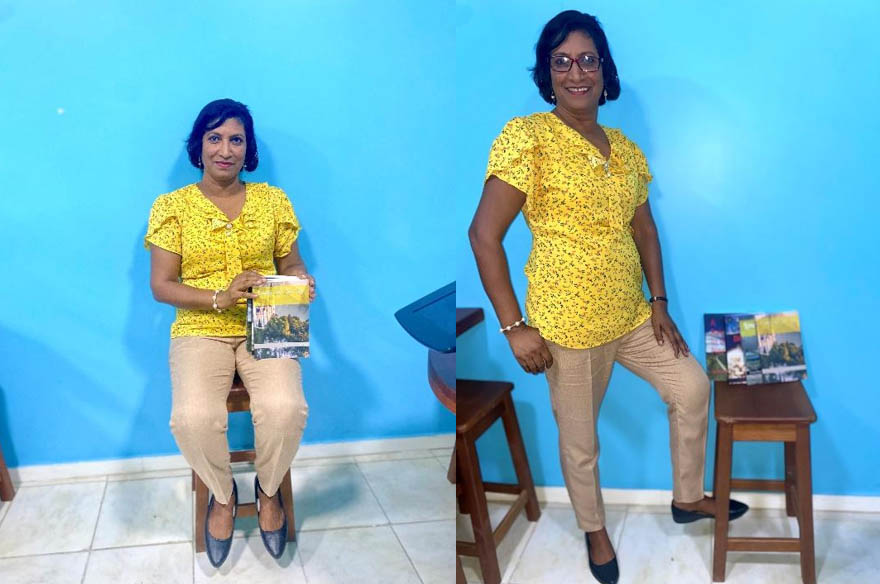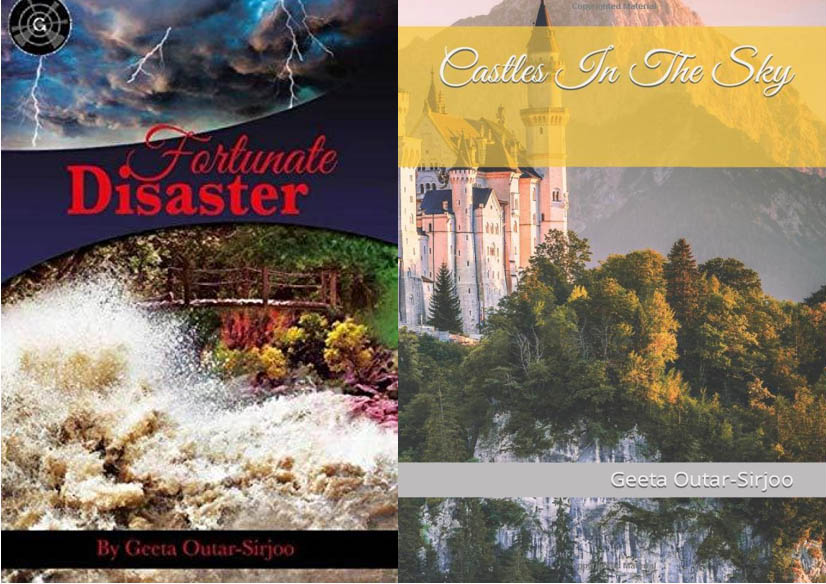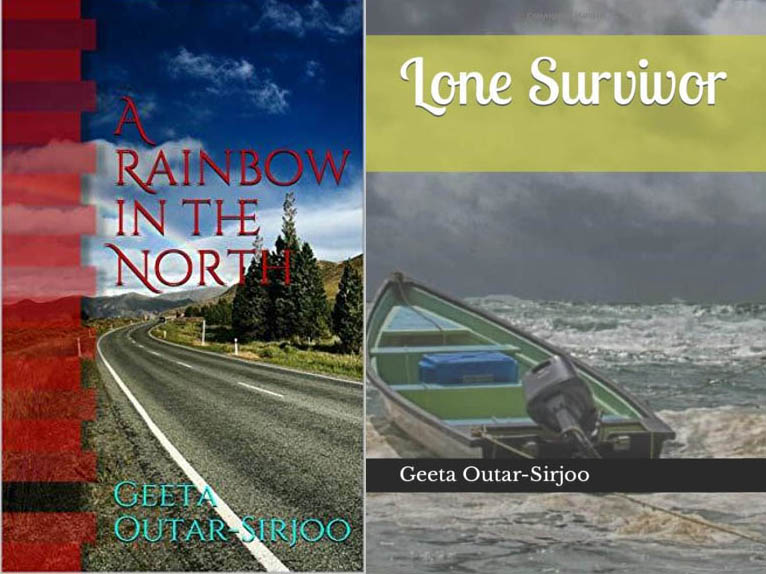By Abigail Headley
Geeta Outar Sarjoo always knew she wanted to leave a legacy behind and she has done just that with her novel “Fortunate Disaster”. The Guyanese writer and inspiration was born to a fisherman/watchman and a fish vendor at Annandale, East Coast Demerara, but migrated to Trinidad and Tobago where she has been residing for approximately 30 years.
In an interview with Stabroek News, Sarjoo said she used to feel that her dream of leaving a legacy was in the area of designing. However, one night in 2011 she had a dream which inspired her to write. Not only was this dream an inspiration but its contents set the scene for “Fortunate Disaster”.
Set in rural India and Trinidad and Tobago, the novel tells the tale of two teenage lovers who dream of sharing a blissful life together, but circumstances cause them to go separate ways (in different parts of the world). Though separated for many years, the two dream of one day reuniting and sharing the life they’ve always dreamed of.
According to Sarjoo, her writing started as a hobby, but soon the desire to become a best-selling author drove her to do it seriously. So far she has also written two other novels and one short story. She is also into scriptwriting and already has one, titled “Secrets in the Rupununi”, in the pre-production stage.
When asked how she keeps her readers engaged, Sarjoo said she switches things up in her novels: “I like… a lot of drama and adventure. I like to interchange the story. If one chapter has something sad and subtle, the next one must be exciting. So I interchange and keep the excitement going. And the intrigues to the end”.
After having her ‘dream-spiration’ the writer said it took her about six months to write down the dream and organize the contents in a way that would captivate her readers. She noted that each novel she writes takes a different amount of time. Her second book, for instance, took one year.
Writing, she explained, is easy to juggle with her everyday life activities, as she usually uses the nighttime to do so.
“Well, at night it is easier to write. When everybody is asleep, it is easier to write. So during the day, when I have an idea, I just write it down and then in the night I expand. I develop whatever it is. But it doesn’t end there, because you always have to step back and review and add, subtract…,” she said.
So far, she has not experienced writer’s block. Additionally, the author is yet to receive negative reviews or critics from readers, but said that if they come she will use them as stepping stones to get better.
She did indicate that it took (and still takes) a lot of in-depth research to be able to embody the characters and depict the environments in her novels in a realistic way. For example, her first novel is set in India during the 2005 monsoon disaster, but she has never travelled to India. However, her dream which was very vivid, coupled with her memories of that eventful moment on the news allowed her to paint a realistic, visual picture for her readers, and some research was helpful.
Among the themes she uses in her novels are love, romance, family, survival, perseverance, nature, and a hint of the supernatural. The most prominent are romance and nature.
According to her publicist, Petamber Persaud (who was also present at the interview), “one of the things of her writing is that love for nature, and nature also showing up as enormous strength or weakness. So throughout her writing you can see her painting an environment being like a character…”
One of the difficulties Sarjoo has faced with being a Guyanese novelist, and both she and the publicist agree, is the lack of copyright laws in Guyana and the Caribbean as well as the fact that publishing is a hard task.
“Self-publishing in Guyana has been the [go-to] from the beginning… from Edgar Mittelholzer, Norman Cameron, some of the big writers started self-publishing and onto now… the advantage that the other press has is that they have the market. In Guyana you have to sell your work, you have to market it, which is difficult,” Persaud pointed out.
The two noted that printing a novel in Guyana is more expensive than abroad and as such imported books are sold at a cheaper price than those published in Guyana. Because of this, and the fact that marketing is slow, Sarjoo has resorted to having her books printed on demand.
“We need to strike a balance somewhere around there to encourage local writers,” Sarjoo implored.
The 57-year-old writer expressed her wish for young people to read more, and said that schools could give reading assignments to their students as a form of encouragement. She explained that some schools in Trinidad encourage students with incentives. “A child who reads five books and more in a month is rewarded,” she said. On this note she encouraged schools in Guyana to take up the same mantle of incentivizing reading among children and youth.
When asked about her latest projects in the making, Sarjoo revealed that she is currently working on another local novel “In Pursuit of Gold”, which she intends to transform into a script for production.
While “Fortunate Disaster” and another novel, “A Rainbow in the North” were set in India and Trinidad, her third novel, “Castles in the Sky” as well as the short story “Lone Survivor” were both set in Guyana. All of Sarjoo’s books have been written in Standard English, but she mentioned plans to write another in future that will be mostly in Guyanese creolese. The three books and short story can be found on Amazon and are available in both print and on Kindle.
She encourages aspiring writers to “go after your dream. Write. It’s therapeutic. If it doesn’t reach the bestsellers’ list it still helps you”.








